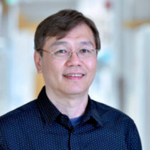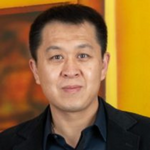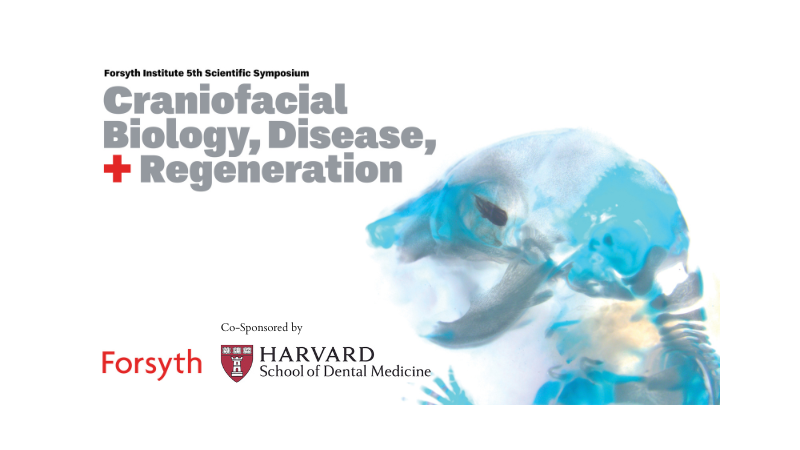How did craniofacial research become the topic for the 5th Forsyth Scientific Symposium? Where does craniofacial development fit in with oral health research? We sat down with the event organizers Dr. Wei Hsu, PhD and Dr. Jirun Sun, MS, PhD to learn more about craniofacial research and the inspiration for this symposium. Dr. Hsu and Dr. Sun have put together an impressive program, with presentations from notable experts in the field. The event promises to be an opportunity for collaboration and thought-provoking discussions for speakers and attendees.
Learn more about the conference and register here.Here are our conversations with the two Forsyth scientists.
Q&A with Dr. Hsu

How long have you been at Forsyth?
I started at Forsyth on June 1, 2021, so about a year and five months.
What led to organizing this conference and choosing this topic?
Forsyth has three major research focuses: immunology, microbiology, and mineralized tissue biology. I belong to the mineralized tissue biology department. My expertise is in craniofacial research, which is important to the mission of the National Institute of Dental and Craniofacial Research (NIDCR) and Forsyth. NIDCR used to be the National Institute of Dental Research (NIDR). NIDR became NIDCR on October 21, 1998. The reason is to include craniofacial research with a growing number of studies around human diseases related to craniofacial development, like cleft lip/cleft palate, craniosynostosis, temporomandibular joint disorders, and other craniofacial anomalies.
I was able to organize the conference based on my research experience and knowledge, and because of the friends and colleagues that I know quite well in this field. We invited them to present their research and learn more about how Forsyth is going to promote craniofacial research work. Forsyth has a strategic plan to build a strong Craniofacial research group and regain its leading status. We are also committed to providing a platform to serve international communities in research and training missions supported by NIDCR.
How does craniofacial research fit in with oral health research?
Traditionally, people focused on dental problems and diseases related to the teeth. But in the 90s, mouse genetics revolutionized our functional study. We were able to examine a single gene function by creating a mouse model missing a particular gene thus creating a vast amount of genetically modified mice with craniofacial defects such as missing teeth, having cleft palates, skull deformities, mandibular defects, or other symptoms reminiscent of human diseases. The field was able to advance so quickly with powerful genetic tools and growing overwhelmingly. And it’s become natural to include craniofacial research as part of dental schools’ missions.
How does your research tie into this overall topic?
I’m a developmental geneticist by training. I started in the 90s and learned how to manipulate the stem cells in the embryo to make genetically modified mouse models. I studied the developmental process and learned how the course of genetic mutation can lead to disease with developmental defects.
One of my research areas is to study craniofacial bone development. I got drawn into this field because a mouse mutation that we made caused a skull development problem reminiscent of the human disease called craniosynostosis. This is not a rare disease, but one of the most common craniofacial defects affecting one in 2000 to 3000 individuals. So, I started to ask, “Okay, so how does this gene cause the problem?”
We happened to identify cells expressing this gene are localized to the places where the stem cells are postulated to be present but have yet to be identified. And then we used that gene as a marker to isolate the cell and show they are skeletal stem cells. Most recently we found that disruption of stem cells causes craniosynostosis as well. So, I transitioned from studying development and disease to stem cell biology. When you isolate the stem cells, there is an opportunity to do cell-based therapy and regenerative medicine. And these are all major topics of this symposium.
What do you look forward to most at this conference?
Personally, of course, I’m really looking forward to seeing my old friends and colleagues and catching up with them. Scientifically, this is a great symposium and I look forward to everybody’s presentations. I’m looking forward to learning, and to stimulating discussion. We are also excited about the collaborative efforts that will come out of bringing people in this field together.
Q&A with Dr. Sun

How long have you been at Forsyth?
I’ve been here since last May. So that’s about 17 months.
What led to organizing this conference and choosing this topic?
I joined Forsyth, around the same time as Dr. Hsu. We met each other and discussed a collaborative project. It was his idea to organize this event. I’m participating, learning, and collecting ideas for the next symposium that I will organize. I am a material scientist by training and focusing on developing functional biomaterials. A part of these biomaterials is for tissue engineering purposes. This conference will be a good opportunity for me to meet experts in the community and establish more collaboration.
How does craniofacial research fit in with oral health research?
That is what we will find out during the conference. There are so many unresolved problems and diseases. We need innovative ideas and advanced technologies to resolve the problems and treat the diseases. Many of the conference’s participants are well-established experts in oral and craniofacial research. I expect productive conversations that will answer this question better than I do.
What do you look forward to most in this conference?
I am looking forward to connecting with other experts and trainees. We have a great panel of experts. I look forward to having fruitful conversations with them and sparking many innovative ideas for future studies.

